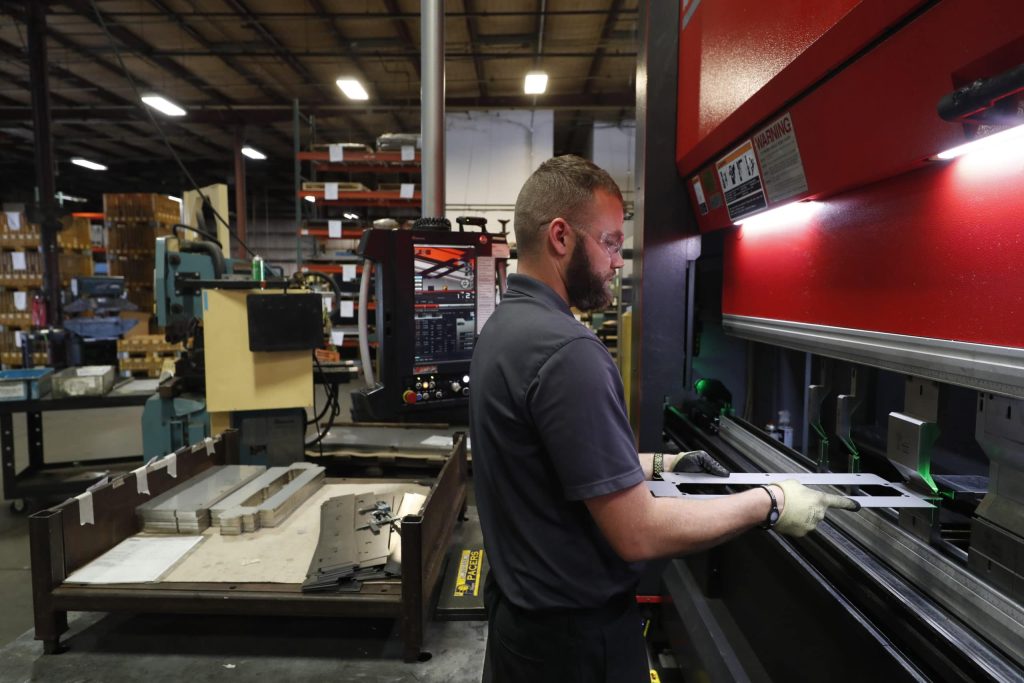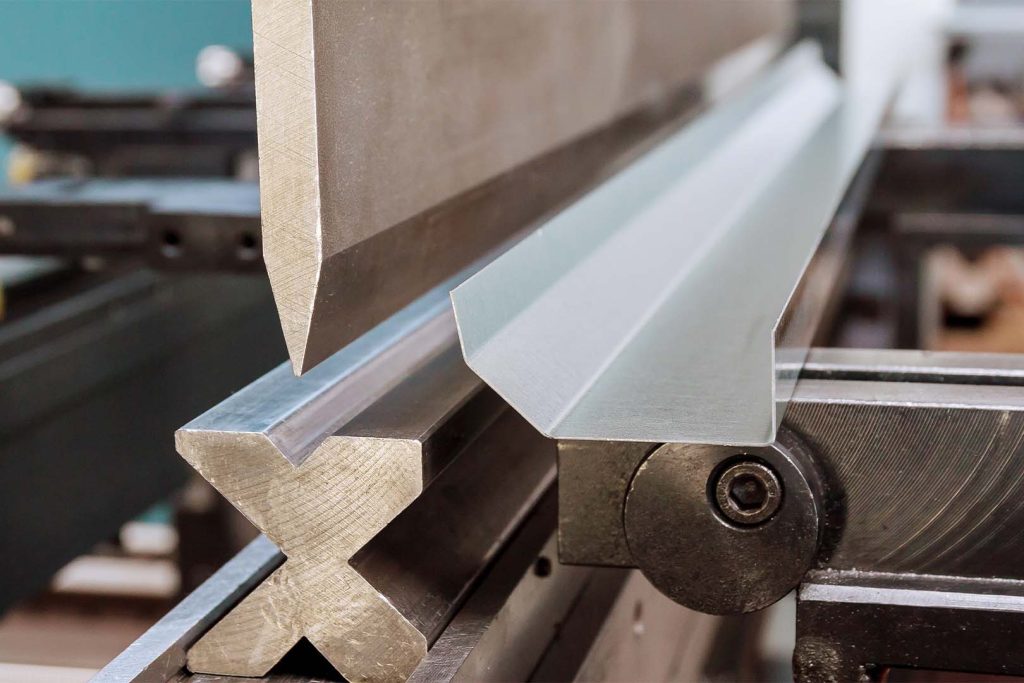Table of Contents
Do you have a DIY project that requires bending sheet metal, but you don’t have access to specialized equipment? Don’t worry, bending sheet metal at home can be easier than you think!
With the right tools and techniques, you can bend sheet metal into any shape you need for your project. In this guide, we’ll walk you through the steps to successfully bend sheet metal at home, so you can complete your DIY project with confidence. Let’s get started!
- Measure the length of the sheet metal you need and mark it
- Cut along the marked line using tin snips
- Use a vise to hold the sheet metal in place and make a crease with a mallet
- Repeat the process until you get the desired angle
How to Bend Sheet Metal at Home: A Comprehensive Guide
Bending sheet metal is a useful skill to have if you want to create various DIY projects or repair metal objects. However, it requires some knowledge and practice to get it right. In this article, we will guide you through the process of bending sheet metal at home.
1. Choose the Right Tools for the Job
To begin, you will need some essential tools for bending sheet metal. These include a metal brake, which is a device that allows you to make precise bends in the metal. You will also need a sheet metal cutter to trim the metal sheet to the desired size, and a ruler to measure the length and width of the metal sheet.
Once you have all the necessary tools, you can begin the process of bending sheet metal at home. It’s essential to make sure that the tools are in good working condition, and you know how to use them correctly.
2. Select the Right Sheet Metal
Before bending sheet metal, you need to choose the right type of metal for your project. Sheet metal comes in various materials such as aluminum, copper, brass, and steel, each with different properties. Therefore, it’s essential to select the right type of metal for your project to achieve the desired results.
Also, consider the thickness of the metal sheet. The thicker the sheet, the harder it is to bend. You may need to use more force or a more powerful tool to bend thicker sheets.
3. Measure and Mark the Sheet Metal
The next step is to measure and mark the metal sheet to ensure you bend it in the right place. Use a ruler or a tape measure to measure the length and width of the metal sheet. Then, use a marker or a scribe to mark the spot where you want to make the bend.
Ensure that the marks are clear and visible, so you don’t make mistakes when bending the metal sheet. You can also use a straight edge to ensure that the marks are straight and aligned.
4. Set Up the Metal Brake
The metal brake is the primary tool for bending sheet metal, so it’s essential to set it up correctly. First, ensure that the brake is in good working condition and is the right size for your metal sheet. Then, adjust the clamps to hold the metal sheet securely in place.
Next, use the adjustable bending bar to set the desired angle for the bend. You can refer to the manual for your metal brake to know how to adjust the bending bar correctly.
5. Make the Bend
Once the metal brake is set up, you can begin bending the metal sheet. Start by inserting the metal sheet between the clamps and the bending bar. Ensure that the metal sheet is aligned with the bending bar, and the marked spot is in the right position.
Then, slowly pull down the bending bar using the handle until the metal sheet bends to the desired angle. Apply enough force to bend the metal sheet, but not too much that it damages the metal or the brake.
6. Check the Bend
After making the bend, check to ensure that it’s in the right place and at the correct angle. You can use a protractor or a square to check the angle of the bend. If the bend is not in the right place, you can adjust it by making another bend or using a hammer to tap it into place.
7. Trim the Excess Metal
After bending the sheet metal, you may have some excess metal that you need to trim off. Use a sheet metal cutter to cut off the excess metal carefully. Ensure that you don’t cut off too much metal, or it may affect the overall shape of the metal sheet.
8. Sand the Edges
The edges of the metal sheet may be sharp and rough after trimming. Therefore, it’s essential to sand the edges to make them smooth and safe to handle. Use a sandpaper or a file to sand the edges carefully until they are smooth.
9. Clean the Metal Sheet
Before using the metal sheet for your project, it’s essential to clean it properly. Use a metal cleaner or a degreaser to remove any dirt or debris from the metal sheet. Then, wipe it down with a clean cloth to dry it.
10. Benefits of Bending Sheet Metal at Home
Bending sheet metal at home has several benefits. First, it allows you to create custom pieces for your DIY projects or repair metal objects without having to take them to a professional. Additionally, it’s a cost-effective way to save money on repairs or projects.
Moreover, bending sheet metal at home can be a fun and creative hobby that allows you to express your creativity and learn new skills. It’s also a great way to challenge yourself and improve your problem-solving abilities.
In Conclusion
Bending sheet metal at home may seem intimidating at first, but with the right tools and knowledge, it’s a skill that anyone can learn. Remember to choose the right type of metal, measure and mark the metal sheet correctly, and set up the metal brake properly before bending the metal sheet.
Also, be patient and take your time when bending the metal sheet. With practice and experience, you’ll be able to create custom pieces and repair metal objects like a pro.
Freequently Asked Questions
Sheet metal bending is a common process in many DIY projects. Whether you are working on a car restoration or making custom furniture, bending sheet metal can be a necessary step. Here are some of the most frequently asked questions about bending sheet metal at home.
1. What tools do I need to bend sheet metal at home?
There are several tools available to bend sheet metal at home. The most common tool is a sheet metal brake, which is a machine that can bend the metal at precise angles. You can also use a metal shear to cut the metal to the correct size and shape. Other tools you may need include pliers, hammers, and a metal file to smooth out any rough edges.
It is important to choose the right tool for the job and to use it safely. Always wear safety goggles and gloves when working with sheet metal, and make sure to read the manufacturer’s instructions before using any tool.
2. How do I choose the right thickness of sheet metal for my project?
The thickness of sheet metal you need will depend on the project you are working on. Thicker metal is stronger and more durable, but it is also harder to bend and shape. Thinner metal is easier to work with, but it may not be strong enough for certain applications.
Before starting your project, consider the load it will need to support and the stresses it will be subjected to. This will help you determine the right thickness of sheet metal to use. You can also consult with a professional or reference a sheet metal thickness chart to ensure you are using the correct gauge for your project.
3. What are some common mistakes to avoid when bending sheet metal?
One of the most common mistakes people make when bending sheet metal is not using the proper tools or techniques. This can result in uneven bends, rough edges, or even damage to the metal.
Another mistake is not measuring the metal accurately before bending it. This can lead to incorrect angles, which can affect the overall strength and stability of your project. It is important to take your time and measure the metal carefully before making any bends.
4. Can I bend sheet metal without a sheet metal brake?
Yes, it is possible to bend sheet metal without a sheet metal brake. You can use a vise or a pair of pliers to make simple bends, or you can make a DIY brake using a few pieces of wood and some clamps.
However, if you need to make precise bends or work with thicker metal, a sheet metal brake is the best tool for the job. Investing in a good quality brake can save you time and frustration in the long run.
5. What are some tips for bending sheet metal at home?
One of the most important tips for bending sheet metal is to take your time and work slowly. Rushing the process can lead to mistakes and uneven bends.
It is also important to use the right tools and techniques for the job. Make sure to wear safety gear and read the manufacturer’s instructions before using any tool.
In conclusion, bending sheet metal at home might seem like a daunting task, but with the right tools and techniques, it can be a satisfying and rewarding experience. By following the steps outlined in this guide, you can achieve precise bends and curves in your sheet metal projects.
Remember to always wear protective gear and take your time when working with sheet metal. Practice on scrap pieces before attempting a project, and don’t be afraid to ask for help or advice from experienced metalworkers.
With time and practice, you can become proficient in the art of bending sheet metal, opening up a world of possibilities for your DIY projects and home repairs. So go ahead and give it a try – you might just surprise yourself with what you can accomplish!
Request a quote today!
[contact-form-7 id="1578" title="Contact form"]
Please compress the file into a ZIP or RAR file before uploading. Alternatively, send through your RFQ by email.
enquires@unitymanufacture.com




